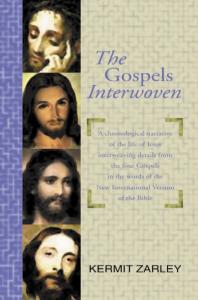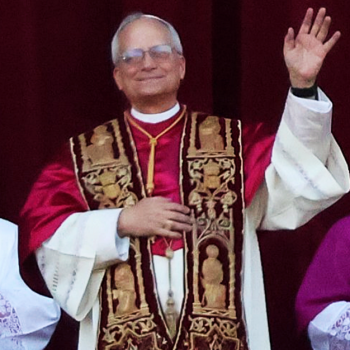 Jesus was a citizen of Nazareth in Galilee. Yet, like any righteous Jewish man, he attended many of the feasts at Jerusalem. Once, he was at the Feast of Dedication and walking in the temple. We read in the Gospel of John, “So the Jews gathered around him and said to him, ‘How long will you keep us in suspense? If you are the Messiah, tell us plainly'” (John 10.24 NRSV).
Jesus was a citizen of Nazareth in Galilee. Yet, like any righteous Jewish man, he attended many of the feasts at Jerusalem. Once, he was at the Feast of Dedication and walking in the temple. We read in the Gospel of John, “So the Jews gathered around him and said to him, ‘How long will you keep us in suspense? If you are the Messiah, tell us plainly'” (John 10.24 NRSV).
This question, about whether Jesus was the Messiah, reflects what New Testament (NT) scholars call “the Messianic Secret.” It refers to a situation that appears multiple times in all four NT gospels; but it emerges more prominently in the Gospel of Mark.
The Messianic Secret means that during Jesus’ itinerant ministry of 2-3 years, he didn’t go around proclaiming publicly that he was Israel’s Messiah promised in its scriptures. Why? It was because God had an exact date when he planned for Jesus to die on the cross. It was to be during Passover due to its meaning that applies to Jesus’ death as the passover lamb.
However, Jesus did on occasion admit privately that he was the Messiah. He did so to the Samaritan woman at Jacob’s well. Not knowing her, Jesus told her she had been married and divorced five times. She then said Jesus must be a prophet. We read, “The woman said to him, ‘I know that Messiah is coming’ (who is called Christ). ‘When he comes, he will proclaim all things to us.’ Jesus said to her, ‘I am he, the one who is speaking to you'” (John 4.25-26).
Another time, Jesus got away from the crowds by taking his apostles to Caesarea Philippi for some important, private teaching. Matthew reports, “he asked his disciples, ‘Who do people say that the Son of Man is?’ And they said, ‘Some say John the Baptist, but others Elijah, and still others Jeremiah or one of the prophets'” (Matt. 16.13-14). Here arises an important point about the identity of “the Son of Man” whom Jesus spoke about so much, sometimes in the third person as here. Some distinguished NT scholars, e.g., Rudolf Bultmann, have said that Jesus never identified himself as the Son of Man. But then, Bultmann was a form critical scholar who sought to de-mythologize the NT gospels and therefore did not accept this Matthew account as reliable.
For, we read next, “He said to them, ‘But who do you say that I am?'” (Matt. 16.15). This remark shows that Jesus previously applied the title Son of Man to himself.
We read next, “Simon Peter answered, ‘You are the Messiah, the Son of the living God.’ And Jesus answered him, ‘Blessed are you, Simon son of Jonah! For flesh and blood has not revealed this to you, but my Father in heaven'” (Matt. 16.16-17). Although Jesus did not respond by saying more expressly that Peter had answered correctly, their Master’s response is an obvious admission that Peter was indeed correct, that Jesus is the Messiah. But again, this revelation was made made privately, this time to his apostles.
When the proper time came, Jesus admitted publicly that he was indeed the Messiah. Matthew relates that at Jesus’ hearing before selected members of the Sanhedrin, the High Priest Caiphas asked him, as those Jews had done earlier at the festival, “‘Tell us if you are the Messiah, the Son of God.’ Jesus said to him, ‘You have said so'” (Matt. 26.63-64 NRSV; cf. Luke 22.70). Jesus answered them vaguely to avoid being a witness to himself. But Mark records that he answered, “I am” (Mark 14.62; cf. 15.2). Matthew likely provides Jesus’ answer as the ipsissma verba (exact words). Mark’s definitive “I am” probably represents the ipsissma vox (similar words).For more information about this difference in gospel reporting, see my The Gospels Interwoven (pp. 279, 365-66).
Many people think that the Sanhedrin–Israel’s ruling council at Jersusalem–condemned Jesus to death because he admitted to being the Messiah. Not so! In the history of Israel, or the Jews, there were many false messiahs; but Israel didn’t condemn them to death and have them executed for it. Rather, the Sanhedrin condemned Jesus as a blasphemer worthy of death because of what he said next.
Matthew records that after Jesus answered them, “You have said so,” he added, “But I tell you, from now on you will see the Son of Man seated at the right hand of Power and coming on the clouds of heaven” (Matt. 26.64). In saying this, Jesus joined together two prophecies in scripture about the Messiah and the Son of Man, in Psalm 110.1 (cf. Ps 2) and Daniel 7.13.
Then Matthew records next, “Then the high priest tore his clothes and said, ‘He has blasphemed! Why do we still need witnesses? You have now heard his blasphemy. What is your verdict?’ The answered, ‘He deserves death'” (Matt. 26.65-66).
I conclude this section in my book by saying (p. 366), “In conclusion, some uncertainty exists regarding the exact wording and chronological order of statements in this part of Jesus’ trial. Although some ambiguity exists in Jesus’ answer to the high priest, his quotations from the OT [Old Testament] unequivocably [sic.] identified himself to the Sanhedrin as the Messiah, the Son of God, for which his accusers charged him with blasphemy and condemned him to death.”













